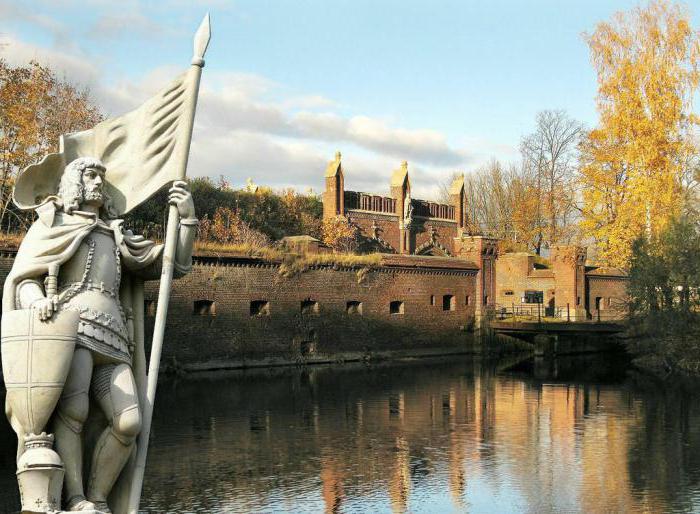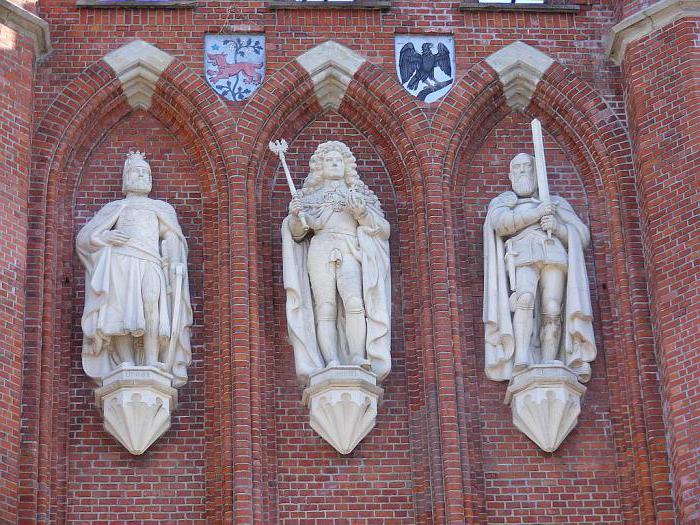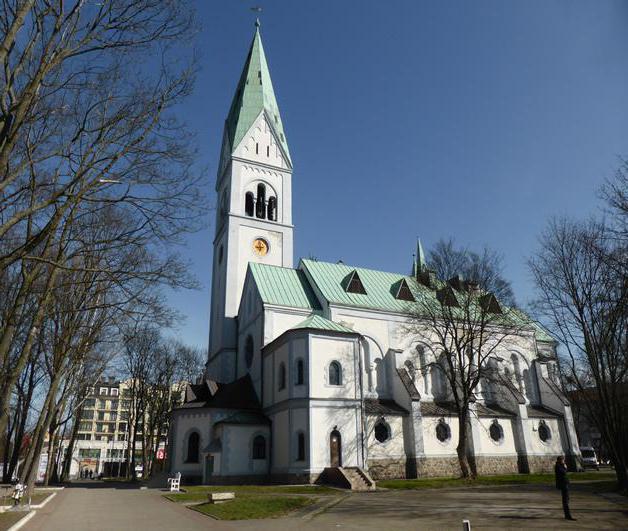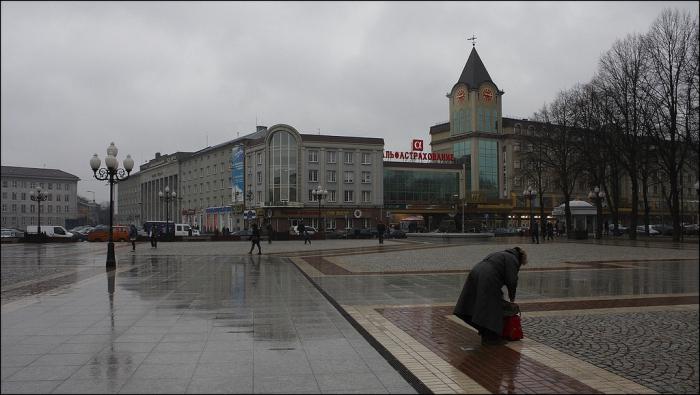Friedland Gate: address, history. Museums of Kaliningrad
Russian Kaliningrad is a city with an interesting history. Until 1946, it was called Koenigsberg and was one of the most important cultural and educational centers of Germany.
Unfortunately, during the battles of World War IImany architectural landmarks of the city were irretrievably lost. However, even the little that has been preserved is of great interest for lovers of antiquity.
Among the most interesting tourist objects of Kaliningrad are the Friedland Gate. For several decades, this museum has a museum dedicated to the pre-war history of the city.

Gate of Koenigsberg
The first gates in the city were built in the XIII century. After 4 centuries, work was carried out on the erection of the First Great Wall. It included 8 gates. Since all these structures were wooden, in 200 years they were decayed badly, and the King of Prussia, Friedrich Wilhelm Four, decided to build the Second Great Wall. The head of the works was appointed architect Ernst Ludwig von Aster, who decided to create a complex of buildings in the style of English neo-Gothic. The first ones they built were the Royal ones, the laying of which took place in 1843, and 10 years later the city was decorated with six more similar buildings: the Zakheim, Rossgarten, Steindamm, Tragheim, Ausfal and Hollanderbaum. The final construction point, which lasted almost 19 years, was the erection of two new gates of a two-hull design: the Friedland and Brandenburg. The first of them received their name in memory of the older building. It was located on the road connecting Königsberg and the city of Friedland, now called Pravdinsky. Through them came carts with provisions from the villages located south-east of modern Kaliningrad.

Friedland Gate: the history of construction in the twentieth century
The second real fortification did not last longdefensive functions. By the beginning of the twentieth century, it became clear that they were not able to protect the city from new types of weapons that had appeared since their erection. In 1910, from the system of military fortifications were excluded and destroyed Tragheim, Shtayndamm and Hollanderbaum gates. Another three such structures were deprived of earthen ramparts, advanced fortifications and casemates. Only the Rossgarten and Friedland gates remained without reconstruction. However, the roads were detoured. At the same time, the buildings have a new function: they have turned into a pedestrian outlet framing in the magnificent landscape Zuid-park.
In the Soviet period of Kaliningrad's history openingsthe gates were laid, and building warehouses were located in them. In the early 1990s, during the purification of serf water ditches in the park, a large number of household items of the early twentieth century were found. To present them to the city residents and tourists, an exhibition of finds was opened at the address: 30 Dzerzhinsky Street. In addition, during these years the gates and the landscape Zuid-Park became part of the excursion program for groups of Germans coming to their historical homeland.
Description of the structure
Like the other gates of Koenigsberg, Friedlandwere built in the Neo-Gothic style, which repeats the features typical of the English architecture of the Tudor times. The author of the project is unknown, but the researchers believe that, most likely, he is Friedrich Stuyler.
From the side of the old city the facade of the FriedlandThe gate is divided into 6 parts by five buttresses. They end with pointed gabled decorative turrets and protrude over a decorative parapet with prongs. All the passages, doors and windows are decorated with portals and executed in the form of pointed arches.
The Friedland gates in the central part have two4.39 m wide and 4.24 m high. At the edges of the structure there are casemates, and on the outside - a guardhouse. The surface of the facade of the gate is decorated with a grid. It is a rhombic ornament of bricks of a different color.
Sculptures on the facade
The Friedland gates (Kaliningrad) were decorateda statue of Friedrich von Zollern, who was one of the most famous Great Orders of the Teutonic Order. Unfortunately, the original was lost during the hostilities during the Second World War. Another sculpture of the knight - Siegfried von Feuchtwangen, Grand Master, who founded the Middle Castle in Marienburg - is located on the outside of the gate. Its author is the sculptor Wilhelm Ludwig Stürmer. In 2005 and 2008, work was carried out to restore these monuments and today they still occupy their seats and are one of the most frequently photographed objects in Kaliningrad.

The Museum of the Friedland Gate
This cultural institution by its appearanceis due to two enthusiasts - Alexander Georgievich Novik and Avetisyants Elle Petrovna. They managed to turn a small exhibition into a modern one into a museum where active cultural and educational work is being conducted.
In 2007, it was recognized as one of the 3 best implemented projects in 2007-2008. In addition, the institution was recognized as the winner of the All-Russian competition of museums in the technical nomination.

Exposition
The first exposition is called "Fortress City". Visitors are invited to make a brief excursion through the pages of the history of Koenigsberg by viewing the 6-minute film and getting to know the information stands. Then they are invited to a large hall, where the second part of the exposition is located, and a virtual walk through the pre-war city takes place. It begins with a real cobblestone road that has been preserved inside the gate, turning into a virtual one, created by projecting onto laid openings. Three projectors create an optical illusion, pushing the boundaries of the real world and "removing" the walls. Even more authenticity is given to the sound effects: the cart creaks, the children laugh and the female heels clink. Under these sounds, excursionists are transferred to Koenigsberg at the end of the 19th and beginning of the 20th century, nicknamed the garden city and the "German Atlantis".
Virtual walk
The light-sound show lasts exactly one hour. During this time, the participants of the excursion pass through the historical center of Koenigsberg, from which, unfortunately, nothing remains in real life. There they "peep" into the windows of cafes, shops and pharmacies, and also witness the divorce of the bridge across the Old Pergola. At the end of the virtual tour, tourists find themselves in a real park, which was destroyed in the early 20th century on the site of former fortifications, and enjoy the beauty of the nature of the Kaliningrad region.

Exposition "Echo of War"
In the museum "Friedland gates" visitors canto experience the thrill of having been in a room stylized under the bomb shelter of the Second World War. There is an audio-visual exposition "Echo of War". It has a modern approach and active use of light, sound and optical effects due to the use of the latest technical means.
"Knight's Hall"
As already mentioned, the Friedland Gate (address: Dzerzhinsky, 30) were decorated with the symbols of the Teutonic Order. In addition, they were installed statues of his prominent representatives. Therefore, it is no mere chance that today in the museum there is an exposition dedicated to the Knights of the Teutonic Order, where the reconstruction of weapons and armor made according to old technologies is presented.
Civilization and sanitation
At one time the Prussian city of Koenigsberg was consideredone of the most comfortable cities in Germany and the Baltic region. The centralized sewage system there appeared much earlier than in most cities of the Russian Empire. The museum, operating inside the Friedland Gate, visitors are invited to see the exhibition devoted to this important component of modern communal services. She talks about the oldest sewerage system, created in the middle of the third millennium BC. e. in the city of Mohenjo-Daro, located on the territory of Pakistan, about the aqueduct in ancient Rome, as well as the ways of water supply to medieval Europe and Russia. Tourists will also learn interesting information about the World Toilet Organization and that November 19 was proclaimed the International Toilet Day.
![sculpture of a knight [1]](/images/novosti-i-obshestvo/fridlandskie-vorota-adres-istoriya-muzei-kaliningrada_6.jpg)
"With faith in the heart"
In the museum "Friedland gates" (address see. The exposition with this name is dedicated to the first settlers who arrived in Kaliningrad, destroyed by British aviation and stormed by the Red Army from different parts of the USSR, immediately after the war. Visitors to the museum will be shown how they saw the city people who came to explore an unfamiliar region, and what kind of family relics they brought with them. In addition, they will see the works of the artist R. Borisovas and a collection of objects used in divine services, which consists of crosses, folding and icons.
Museums of Kaliningrad
In the city there are a lot of other interestingobjects that will be interesting to visit tourists. Among them there is an art gallery, "FORT N 5", a collection of amber and articles from this stone and others. By the way, many of them are located in the former fortifications. For example, the Center for Contemporary Art found a shelter in the tower of the barracks "Kronprinz", built in the XIX century.

Now you know where the Fridlandgoal. Kaliningrad is a city with a rich history and numerous sights. When he visits, it's worth to visit Dzerzhinsky Street 30, to visit the museum dedicated to the old Koenigsberg.
</ p>




